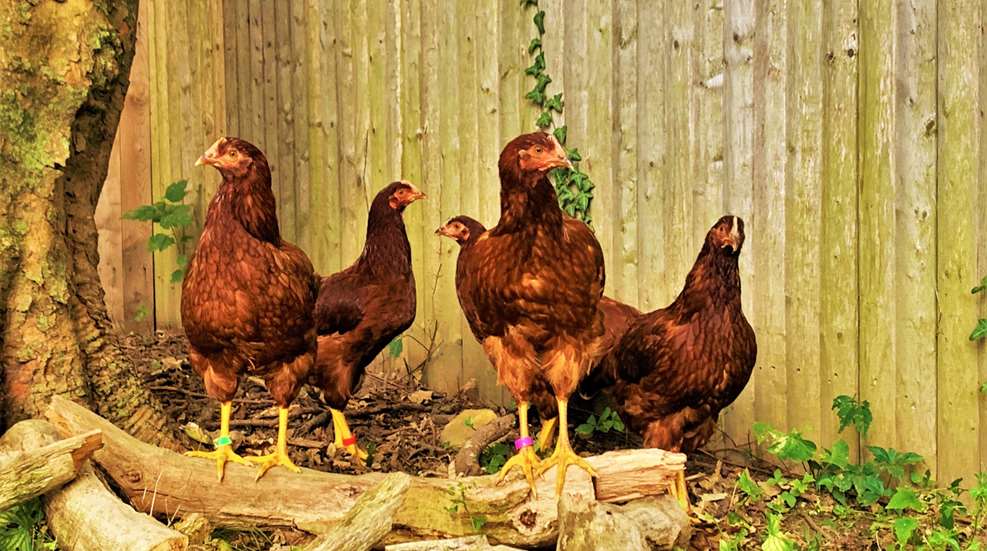
In the past few years, the number of people who have taken on backyard farming has skyrocketed. Some families find themselves raising chickens simply to have as pets, while others raise them for their eggs and potentially meat. Here, we touch on the top things to consider when adding new feathered members to your flock!
The first thing you are going to want to do is to check your local ordinances when it comes to livestock. Many towns will have limits on not only the size of your flock, but also whether or not you are permitted to raise a rooster. For example, in Brookhaven Township here in New York, I am allowed to have six hens in my flock but am not allowed to own any roosters.
The size of your chicken coop will be dependent on a few different factors, such as the number of birds in your flock and the breed. On average, you will want around 8-10 square feet of space for a large-sized breed, while smaller breeds can make do with less space. Keep in mind that during the summer excess space may be nice, but during the winter months when temperatures drop, excess space means it is tougher to keep warm. Smaller coops are easier to heat with simply the body heat of the chickens and the nesting material you place inside.
On average, you should plan to have one nesting box for every four to five chickens in your flock. If you have extra nesting boxes that is ok, but don't be surprised if your chickens tend to group up together in one or two specific nesting boxes, especially in cooler temperatures when they want to share body heat and stay warm. Gravity-fed food and water containers are your best friend when it comes to keeping your birds fed. You'll just need to remember to make extra trips throughout the day to keep water accessible if temperatures are below freezing. Both hens and roosters love to perch above the ground on roosting bars. Be sure that the roosting bar you have is both large enough to fit all of your birds and strong enough as well! Multiple roosting points can easily be added to your coop from materials you can find around your yard, such as a fallen tree branch.
There are many options available to you when it comes to deciding which breed to raise. Each breed of chicken has its own unique characteristics, such as temperament, egg size and even varying egg colors such as blue and green! My favorite breed, Rhode Island Reds, are considered a medium to large-sized bird, with hens averaging around 6.5 pounds and roosters weighing slightly more at around 8.5 pounds. The plumage is a nice mixture of various shades of red mixed with splashes of black and occasionally green in the tailfeathers. Hens will lay medium to large-sized brown eggs at a rate of between five to seven eggs a week.
Baby chicks are most easily found at your local farming supply store, such as Tractor Supply. Once your chicks quickly transition from their starter feed to food meant for "teenage" chickens and larger, you will see that their chicken feed comes in two main forms: crumbles and pellets. While many chickens will consume their feed in crumble form and transition to pellets once they reach adulthood, some chickens are a bit picky and will refuse to eat pellets. You may find yourself buying crumbles well into adulthood ... ask me how I know!
Just like we humans take vitamin supplements for stronger bones, clearer skin, etc., chickens will occasionally need supplements as well. One of the most common supplements given to chickens is calcium. If you find eggs are being laid with a very brittle shell, this is a telltale sign that your hens need a boost of calcium. You can supply this in the form of an oyster shell crumble (available in those same farming supply stores) mixed in with their daily feedings. There are other concerns that may require supplements, such as chickens that are lethargic, have poor egg production, or have poor feather condition.
Similar to kids begging for candy at the grocery checkout lane, chickens love treats as well! Mealworms, crickets and similar insects not only make chickens cluck with delight, but they also provide additional protein. Many fruits and vegetable scraps from your daily meals can also be given to your flock ... just be sure to do your research, as not everything is advised for a chicken's diet. Common treats that I feed my chickens include watermelon, cucumbers, blueberries and corn on the cob.
Rhode Island Reds are a very hardy breed and tend to tolerate colder temperatures quite well, even when temperatures fall to around zero degrees Fahrenheit. While you do have the option to install an electric heater in your chicken coop, doing so does pose additional concerns that you will need to be ready for. Pay attention to factors that could cause electrical fire or electric outage. Your birds will naturally huddle together for warmth, and there are additional steps you can take to further insulate your chicken coop.
Pay special attention to shielding open-air portions of your coop to allow for fresh air to flow through without creating a chilly wind tunnel in an enclosed run. Extra pine shavings can be added to your coop as well to give your chickens extra material to bed down within. Be sure to check on the chickens' combs, wattles and feet, and address signs of frostbite immediately. If bedding becomes wet during cooler temperatures, be sure to replace it with dry bedding and your chicks will stay happy and warm!
Raising your own flock of chickens, no matter how large or small the number of birds you own, is an excellent way to work as a family to not only raise your own food (whether it be eggs or the chickens themselves) but to teach responsibility to the younger generation. Regardless of your experience level, you are sure to enjoy this new hobby as you learn to care for your feathered friends.





































